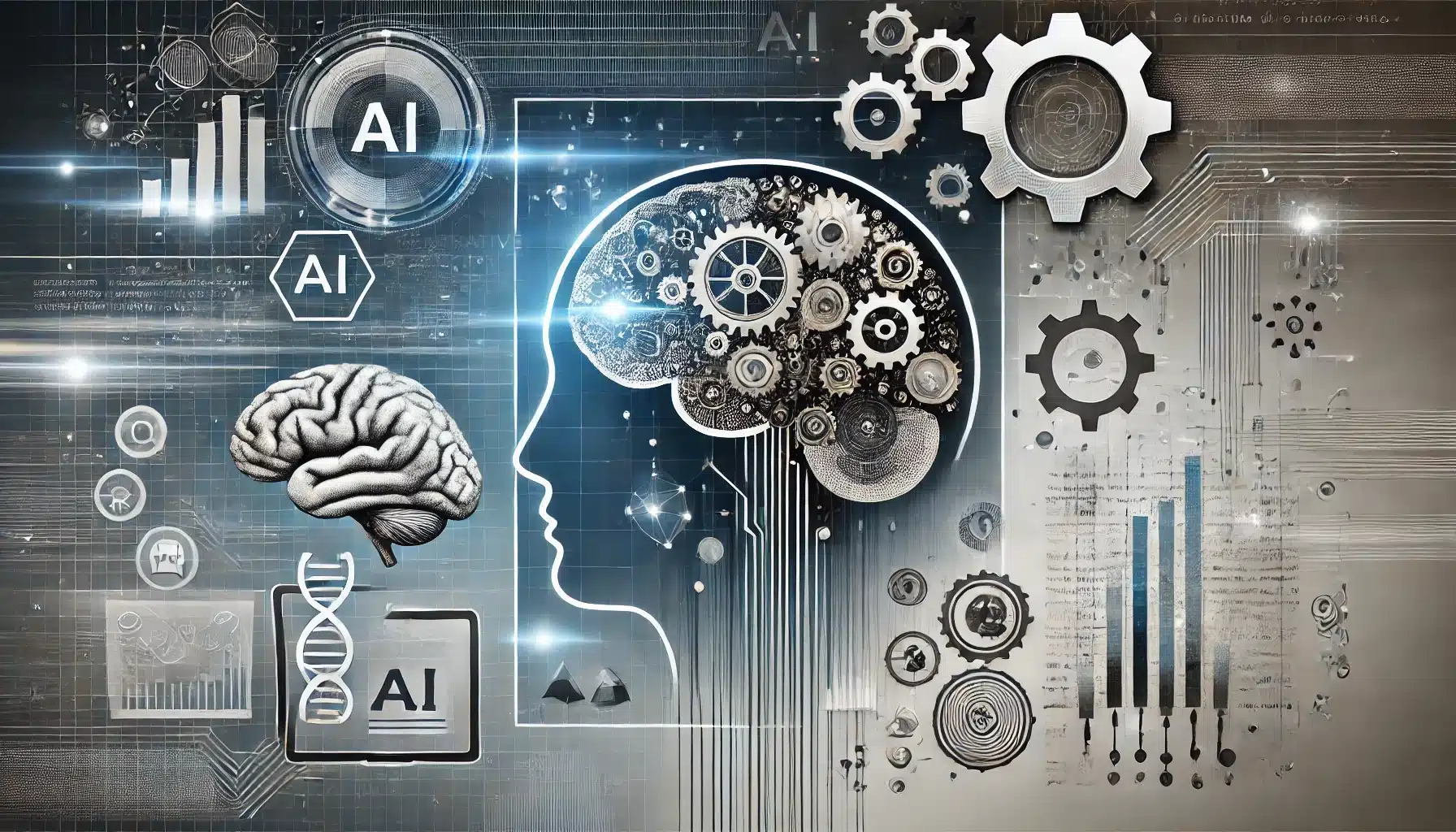Generative AI (GenAI) tools like ChatGPT and others are becoming commonplace in workplaces, especially among knowledge workers.
These tools are designed to help with tasks like research, writing, and data analysis.
But while they offer great efficiency, a recent survey reveals that their impact on critical thinking may not be entirely positive.
The Shift in Cognitive Effort
The new report from Microsoft’s research team surveyed 319 knowledge workers to understand how GenAI affects their critical thinking and cognitive processes.
The results were mixed, showing that while GenAI reduces the cognitive effort required for certain tasks, it also changes the way workers engage with complex problem-solving.

Key Findings
- Reduced Cognitive Effort: GenAI tools help knowledge workers complete tasks faster, but this often comes at the expense of deeper cognitive engagement.
- Confidence vs. Critical Thinking: When users become too reliant on AI tools, their confidence increases, leading them to trust the AI’s output without fully questioning it. This reduces their engagement in critical thinking.
- Task Efficiency at a Cost: While tasks may be completed quicker, workers may skip over deeper analysis or exploration of problems, relying too much on the AI’s suggestions.
How Does GenAI Affect Workers’ Confidence?
One striking finding from the study is the role of confidence in using GenAI.
As users gain experience with these tools, they become more confident in the AI’s abilities. While this can boost efficiency, it often leads to less critical scrutiny of the AI’s answers.
Confidence Can Be a Double-Edged Sword
- Increased Trust: Workers may accept AI-generated solutions without questioning their validity.
- Lowered Effort: With the AI providing answers, workers might feel less compelled to do thorough research or think critically.
In many ways, confidence can lead workers to take the AI at face value, which may not always be ideal in situations that require deeper analysis or creative thinking.
Are Knowledge Workers Becoming Less Engaged?
While GenAI can help cut down on time-consuming tasks, it seems to be affecting workers’ ability to engage in critical thinking. This might be particularly noticeable in industries where solving complex problems and decision-making require human judgment and expertise.
The Importance of Active Engagement
- Verification over Exploration: Workers are more focused on verifying AI outputs rather than questioning or improving them.
- Shifting Roles: Instead of engaging with new ideas, workers may find themselves verifying facts and reassembling AI-generated content, rather than creating their own.
This shift may make workers more passive in their work, relying on the machine for the heavy lifting and doing less intellectual exploration themselves.
Human Confidence Challenges AI Output
Interestingly, the study found users who are more confident in their own abilities to think critically engage more thoughtfully with AI outputs.
These users tend to be more discerning and less likely to trust AI-generated content without scrutinizing it first.
How Self-Confidence Helps
- Better Scrutiny: Workers with higher self-confidence are more likely to question and challenge AI answers.
- Increased Creativity: Confident workers are more likely to use AI as a tool to enhance their thinking, not replace it.
- Improved Outcomes: By combining their own judgment with AI’s efficiency, these workers can improve the quality of their work.
This suggests that fostering self-confidence and critical thinking skills in employees may help mitigate the risks posed by overreliance on AI tools.
Hiring? Post jobs for free with WhatJobs
The Future of Critical Thinking in the Age of AI
As generative AI continues to evolve, it will undoubtedly change the way knowledge workers approach their jobs. But will it enhance or hinder critical thinking? The answer is likely somewhere in between.
What Can Be Done?
- Design Tools That Encourage Engagement: Companies and AI developers need to ensure that tools are designed in a way that promotes active, thoughtful engagement rather than passive consumption.
- Training for Users: Encouraging workers to think critically and question AI outputs can help balance the efficiency gains with the need for human creativity and judgment.
- Monitor Cognitive Load: Keeping an eye on how GenAI affects workers’ mental engagement is crucial. Balancing efficiency with deep thinking will be key to harnessing AI’s full potential.
As workplaces integrate more AI into daily operations, the challenge will be finding ways to use these tools without sacrificing the cognitive skills that make human workers unique.
Need Career Advice? Get employment skills advice at all levels of your career
Looking Ahead: Navigating the AI-Enhanced Future
While generative AI has immense potential to revolutionize the workplace, it’s clear that it comes with both benefits and challenges. The key will be in finding ways to balance its efficiency with the need for deep, critical thinking.
To thrive in this new landscape, workers must remain engaged and thoughtful about how they use AI, ensuring it complements their skills rather than replacing them entirely.
By fostering a mindset of critical thinking, companies can help employees harness the power of AI while maintaining the human touch that drives innovation.
FAQs
Is AI killing critical thinking?
AI has certainly changed the way we process information and make decisions, but it’s not inherently “killing” critical thinking. Instead, it’s reshaping how we use and apply it. AI can assist in analyzing data, identifying patterns, and even providing insights, which can help people focus on more complex, higher-order thinking. However, there is a risk that over-reliance on AI tools might lead to less independent thought, as some people may start to accept AI-generated results without questioning or critically evaluating them. The key is balance. AI can be a valuable tool to support decision-making, but humans still need to engage in critical thinking to ensure that the AI’s outputs are accurate, relevant, and ethically sound. The real danger lies in the complacency that could arise if we begin to blindly trust AI, losing our ability to think critically and question assumptions. Therefore, rather than killing critical thinking, AI should be seen as a complement to it, encouraging us to think in new ways while still challenging ideas and assumptions.
Is ChatGPT capable of critical thinking?
ChatGPT can simulate critical thinking to a certain extent, but it’s important to understand its limitations. While it can analyze information, recognize patterns, and provide thoughtful responses based on context, it doesn’t “think” in the way humans do. ChatGPT doesn’t have subjective experience, emotions, or the ability to form original opinions based on real-world experiences. Instead, it processes data from patterns in language and can mimic critical thinking processes by applying logic, offering counterpoints, or presenting different perspectives.
However, its “thinking” is entirely dependent on the data it has been trained on. It doesn’t possess true understanding or independent judgment. So, while ChatGPT can assist in critical thinking by offering different viewpoints or helping to analyze complex ideas, it lacks the deep, reflective reasoning that human critical thinking involves, such as the ability to question its own assumptions or synthesize personal experiences and emotions.
In short, ChatGPT can provide support for critical thinking, but it cannot truly engage in critical thinking the way a human can.
What are the 6 principles of Microsoft AI?
Microsoft’s six principles for AI are designed to ensure that their AI technologies are developed and used in a responsible and ethical manner. These principles are:
Fairness: AI systems should treat all people fairly and avoid unfair bias. Microsoft aims to ensure that AI doesn’t propagate discriminatory outcomes based on race, gender, ethnicity, or other factors.
Reliability and Safety: AI should be reliable and operate safely within its intended context. Microsoft strives for AI systems to be robust, predictable, and secure, and to minimize the risk of harm.
Privacy and Security: AI systems should protect the privacy and security of users. Microsoft ensures that data used by AI is handled securely, and personal information is protected through encryption and other safeguards.
Inclusiveness: AI should be designed and deployed in a way that is inclusive and benefits everyone. This means ensuring that AI is accessible to all users, regardless of background, and that it works for a diverse range of people and situations.
Transparency: Microsoft advocates for transparency in how AI systems work and how decisions are made. Users should be able to understand how AI systems are functioning and how they affect outcomes.
Accountability: AI systems should be accountable to people. Microsoft emphasizes the importance of maintaining human oversight and ensuring that AI is used responsibly and ethically, with mechanisms in place to address issues and ensure compliance with legal standards.
These principles guide Microsoft’s approach to creating and deploying AI in ways that are ethical, transparent, and aligned with societal values.
What is the Microsoft AI image controversy?
The Microsoft AI image controversy refers to a situation that arose around the use of AI-powered image generation tools, particularly with how AI models can sometimes generate inappropriate, biased, or offensive images. One of the most notable instances occurred in 2022 when Microsoft integrated an AI model into its image-generation tool, DALL·E 2, and faced backlash over the potential for generating harmful or discriminatory content.
Some specific issues included:
Bias and Stereotyping: AI models, such as DALL·E 2, were criticized for producing biased images. For instance, when users asked the AI to generate images of specific professions, it often portrayed people in stereotypical roles based on gender, race, or ethnicity, reflecting biases in the data used to train the AI.
Inappropriate Content: In some cases, the AI generated explicit or offensive imagery, raising concerns about the potential for misuse of these tools to create harmful or inappropriate content.
Lack of Oversight: Critics pointed out that there was insufficient oversight or moderation in AI-generated content, leading to instances where the AI generated images that violated community guidelines or ethical standards.
In response to these concerns, Microsoft and other tech companies working with AI have taken steps to address the issues, such as implementing stronger moderation tools, refining algorithms to reduce bias, and focusing on transparency and ethical use of AI. They’ve also worked to educate users about the potential ethical implications of using such powerful technology.
This controversy sparked broader discussions about the responsibility of tech companies in developing AI technologies that are ethical, inclusive, and free from harmful biases.




